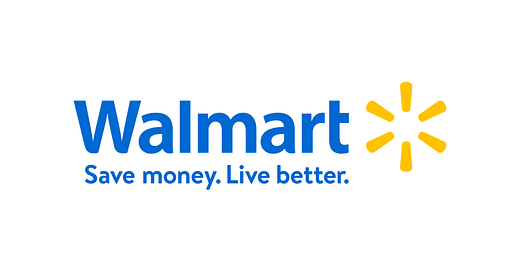Walmart & Ribbit's "Fintech" Is Retailer's Latest Confusing Offering
Why Walmart wants a fintech & Green Dot stands to lose the most
Hey all, Jason here.
Well, 2021 is off to a bang - with ~$2.7 billion in financing announced in the past few days (if you want to keep up, recommend subscribing to Nik Milanović’s This Week in Fintech).
But one caught my eye - Walmart’s vague announcement that it’s partnering with Ribbit Capital (Affirm, Robinhood, Credit Karma, etc.) to launch a fintech …



